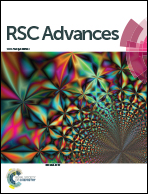Light trapping effect in plasmonic blockade at the interface of Fe3O4@Ag core/shell
Abstract
Spherical isotropic magnetite (Fe3O4) nanoparticles were coated with a spherical isotropic Ag-shell in order to investigate the possibility of trapping photons through plasmon or plasmonic energy transfer enhancement at the magnetic–plasmonic interface coupling structure of core/shell. Our experimental results showed that: (1) the maximum broadening of optical absorption of Fe3O4 nanoparticles, as revealed by UV-Visible spectrophotometry, increases to a higher value due to the Ag shell thickness (7 nm), resulting in the decrease of saturation magnetization as measured with Vibrating Sample Magnetometer (VSM); (2) the measured saturation magnetization drops to a lower value as the maximum value of absorption shifts to a higher wavelength, because of the die out of two small peaks of Fe3O4 cited within 340–440 nm by the Ag plasmonic peak cited at 400 nm, which results in the shift; (3) the increased shouldering of absorption observed in UV-Visible spectrum decreases linearly by wavelength due to the increase of shell diameter, and ends to the initial maximum, which in turn results in the increase of saturation magnetization.


 Please wait while we load your content...
Please wait while we load your content...